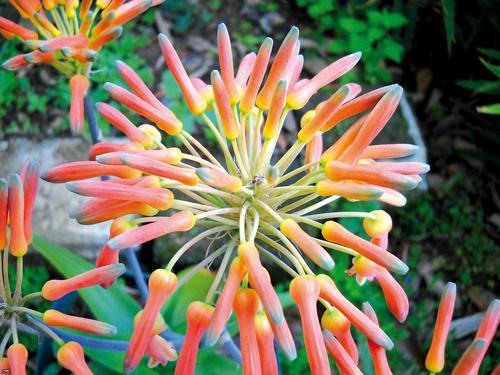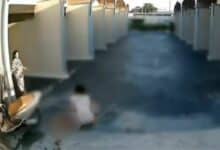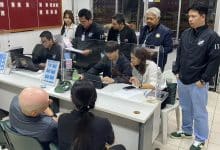Phuket Gardening: ABC of plants – “A’ is also for almond

PHUKET: A couple of recent inquiries reminded me of another omission in my opening sorties on the subject of ‘A’ plants.
Chris Sieber wrote to ask how he could find a source book where he could “find plant names in English, Latin and Thai.” And on the subject of almonds, he added: “About three years ago I brought three green almonds from Cuba and put them in the soil. [One of the trees is] now three meters high.
“I wonder if I will ever get some nuts from it. Do you think I should prune it?”
Second things first. Congratulations, Chris, on growing an almond tree (prunus dulcis), presumably from a drupe (nut). Phuket is frankly a bit hot for almonds and I have seen few here. So, one out of three sown is a good return. Of the three main strains of almond trees, two are self-pollinating. The one that is not self-pollinating is called the tuono – with a hairy shell and smaller drupes – and has the virtue of being disease resistant. The nonpareil is less impervious to attacks, but has a smoother shell, larger kernels and is self pollinating.
In California horticulturalists have developed a commercial hybrid, based on both varieties, which has the virtues of each. So if your tree is either of the two latter strains – and it probably is – it should be self-sufficient, and not reliant on activity by bees or other insects.
As to when it will bear fruit, I cannot say, but three years is probably too soon to expect a result. For example, avocados take seven years to produce the goods. Almonds can reach 20 feet in height. I would refrain from pruning the tree, unless it is getting too big for its boots. Almonds are relatively slow-growing anyway.
On the subject of books, the most comprehensive guide with Thai names, botanical names, and everyday English names, is a weighty tome called Plant Materials in Thailand which is written by Uamporn Veesomai. It contains photographs of 1320 plants that will grow in this country. At 1800 baht, it is expensive, but it is an indispensable reference book for the serious gardener. I bought my copy from the bookshop in Central Festival. My only concern is that the order of material means that you will probably need to consult the index. The much more selective A Field Guide to Tropical Plants of Asia by Engel and Phummai, published by Marshall Cavendish, also has the linguistic information you require. Since it is a smaller book, I carry this around with me when I visit nurseries.
Returning to plants, another ‘A’ plant worth a mention is the aloe. It’s probably more familiar to many as aloe vera, an ingredient in body creams and lotions, but the plant itself, a succulent which hails from South Africa, is a fine sculptural addition to any garden. The lance-shaped leaves grow in rosettes or spirals at the stem or branch tips, and are usually toothed or spiny. Tubular red, orange or yellow flowers burst upwards from bare stems at the center of each crown.
Their striking architectural form means that aloes are popular as landscaping plants, and are often used on roof gardens. Widely cultivated is A. arborescens, which is bushy and stemless, a low-growing species with red or yellow spikes of flowers and fleshy, blue-green leaves, curved and tapering, and up to two-feet long. It is resistant to salt wind and drought, and is thus a sensible choice for your Phuket garden.
A bainesii looks rather different: it has a sturdy trunk and has dense terminal rosettes of green leaves. But be careful, they are tipped with sharp teeth. Finally, there is A. ferox, and as its name implies, it is even more fiercely armed.
Tip of the week – Tropical triumph: Tropical plants in cool climates
I HAVE always taken the view that no more than 20 per cent of tropical plants could survive being transferred to a Northern European climate – say from Phuket to London – and even fewer if the temperature dropped below zero. But keeping tropical plants indoors as our 19th century forebears knew is a different story. Short on sun but protected from frost, they can and do survive.
Visiting my sister in Devon, I noticed she had three plants in the bathroom, all of which also grow in my Phuket garden. They are schefflera, a pinkish leaved variety of racaena and a spathiphylum, which was actually in flower. None of them looked very happy but then they were more-or-less in a state of waterless hibernation awaiting return of spring sunshine.
On the other hand, popular herbs cultivated in Thailand, such as sage, thyme, rosemary and chives, were thriving in the cold conditions.
If you have a question or a garden that you would like featured, you can email the author here.
Keep checking our online Phuket Lifestyle pages and join our Facebook fan page for regular gardening features and tips.
This article appears in the current (May 25-31, 2013) issue of the hard-copy Phuket Gazette newspaper, now on sale at newsstands throughout the island. Digital subscribers may download the full newspaper, this week and every week, by clicking here.
— Patrick Campbell
Latest Thailand News
Follow The Thaiger on Google News:


























